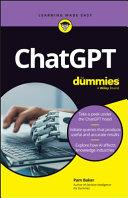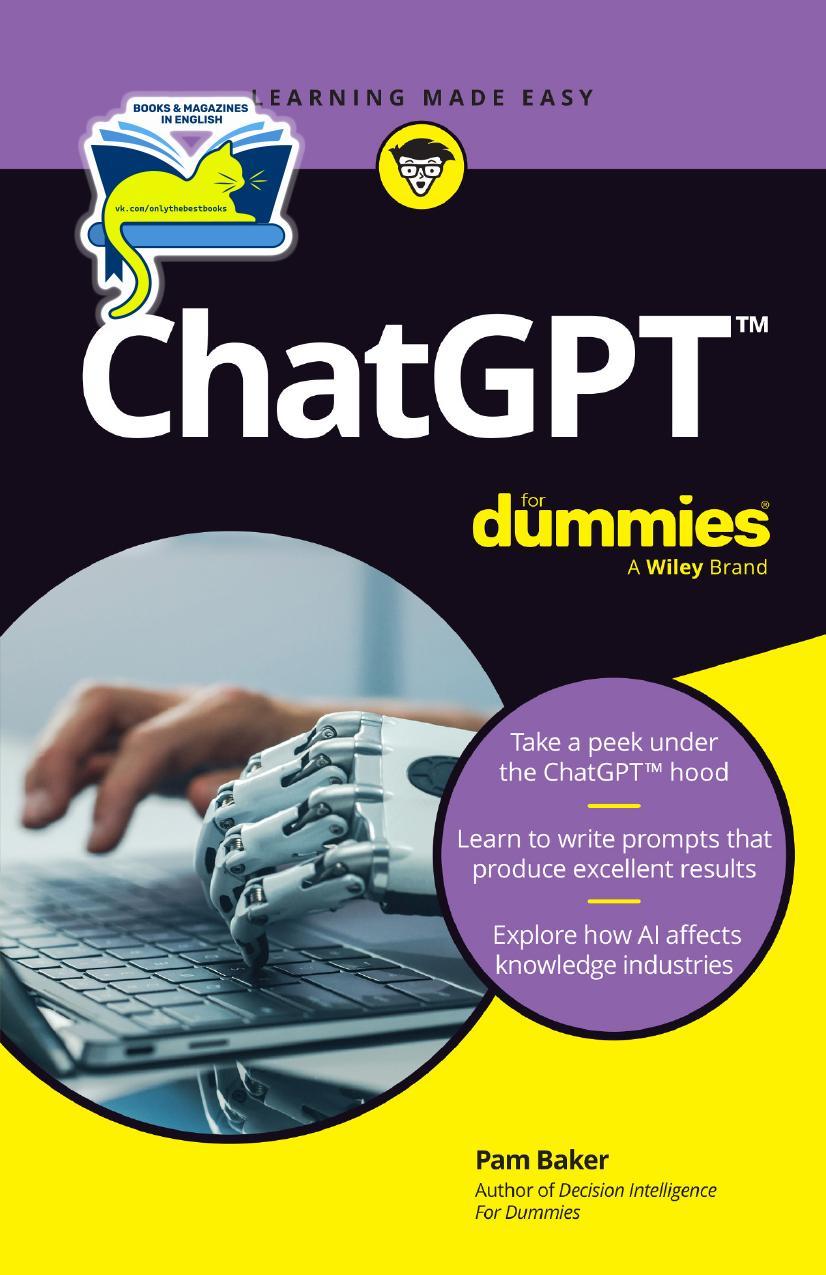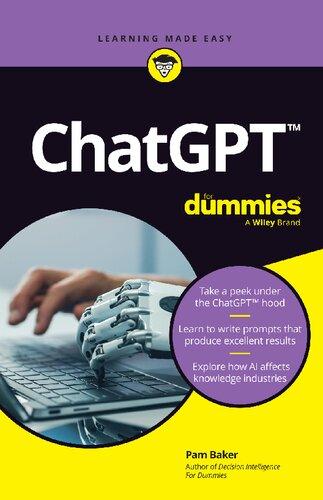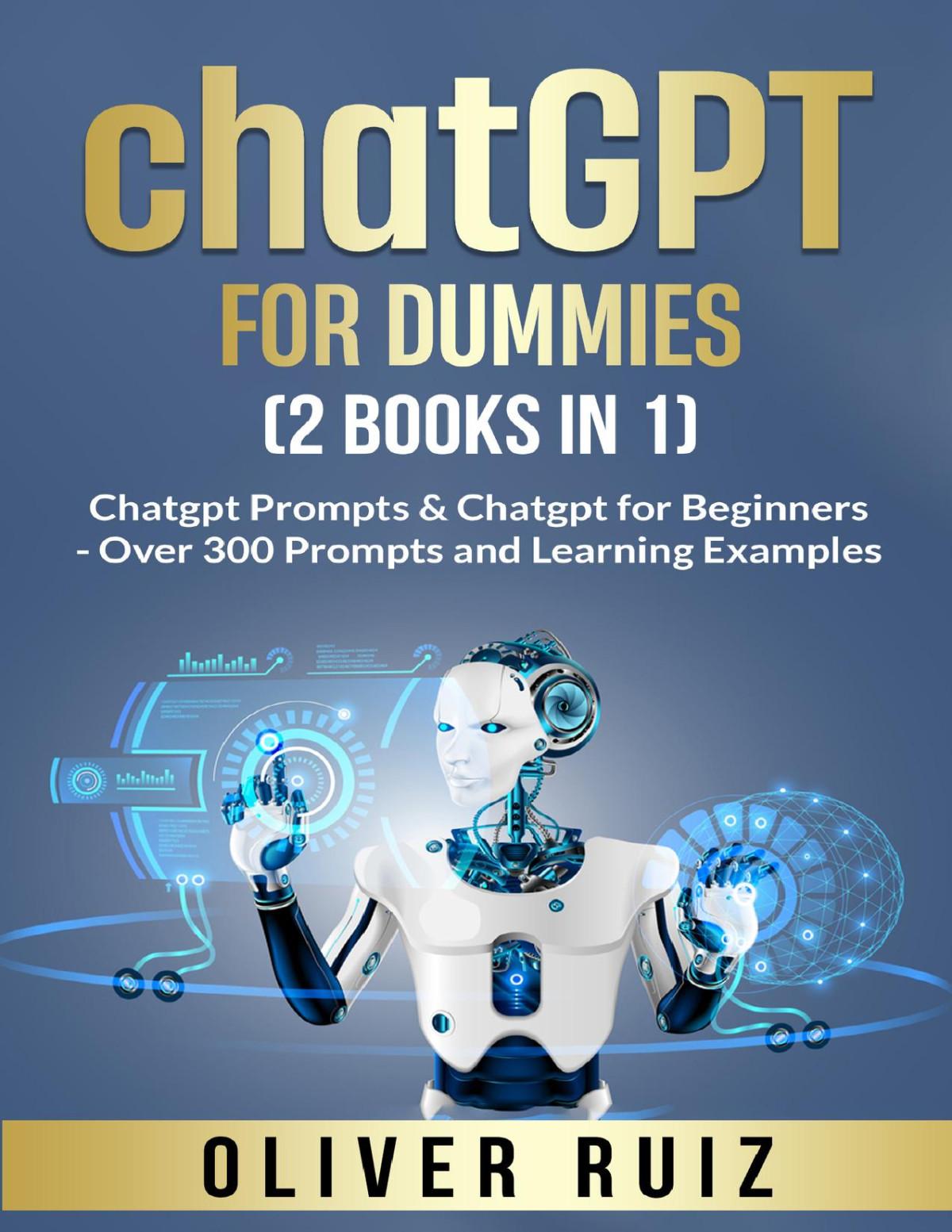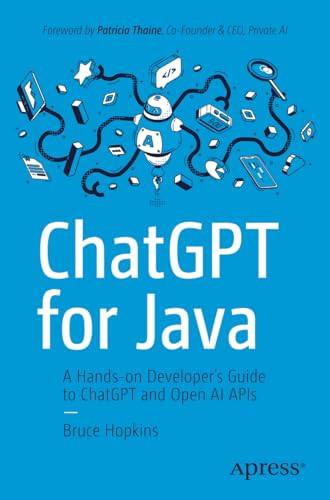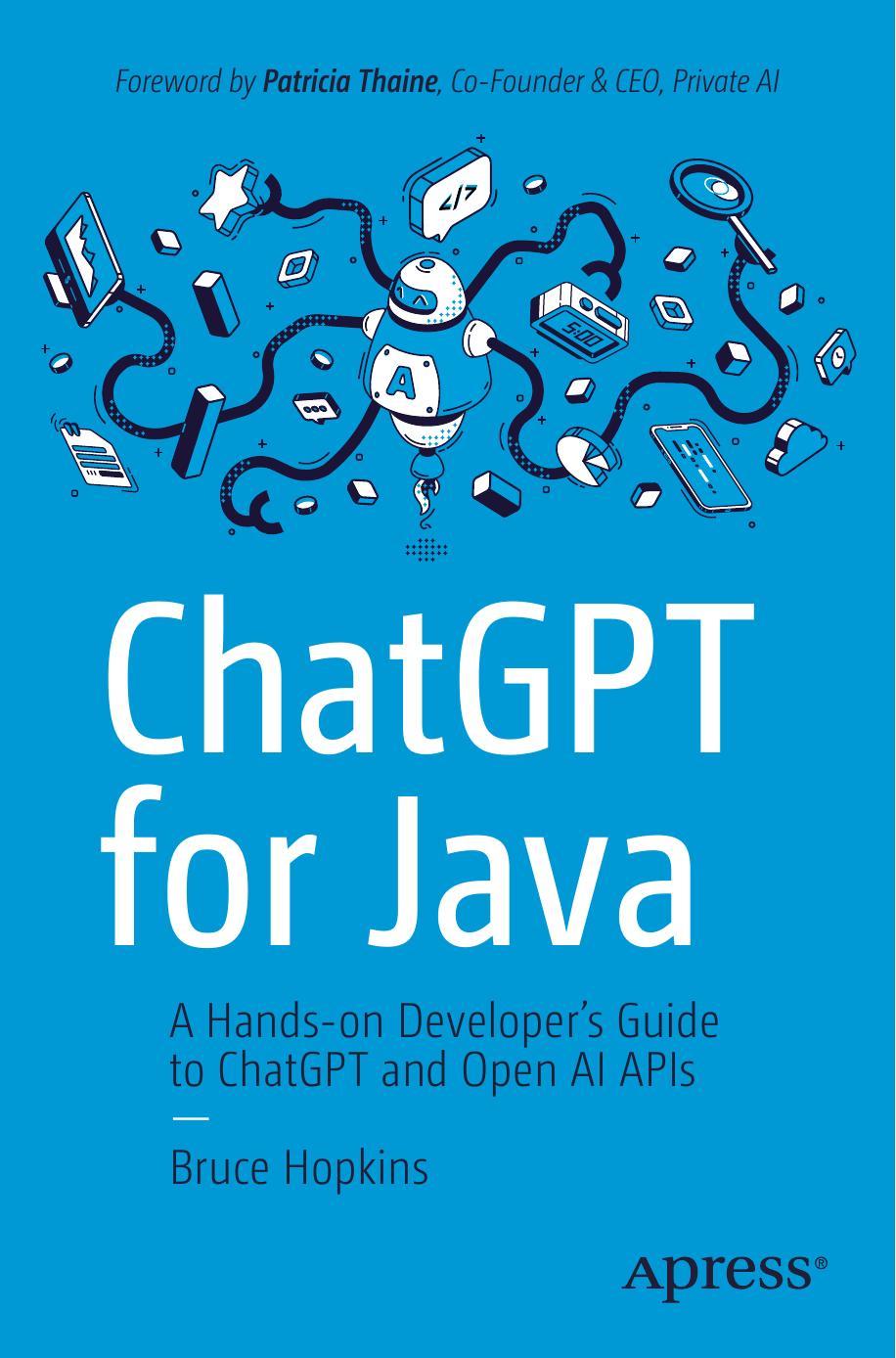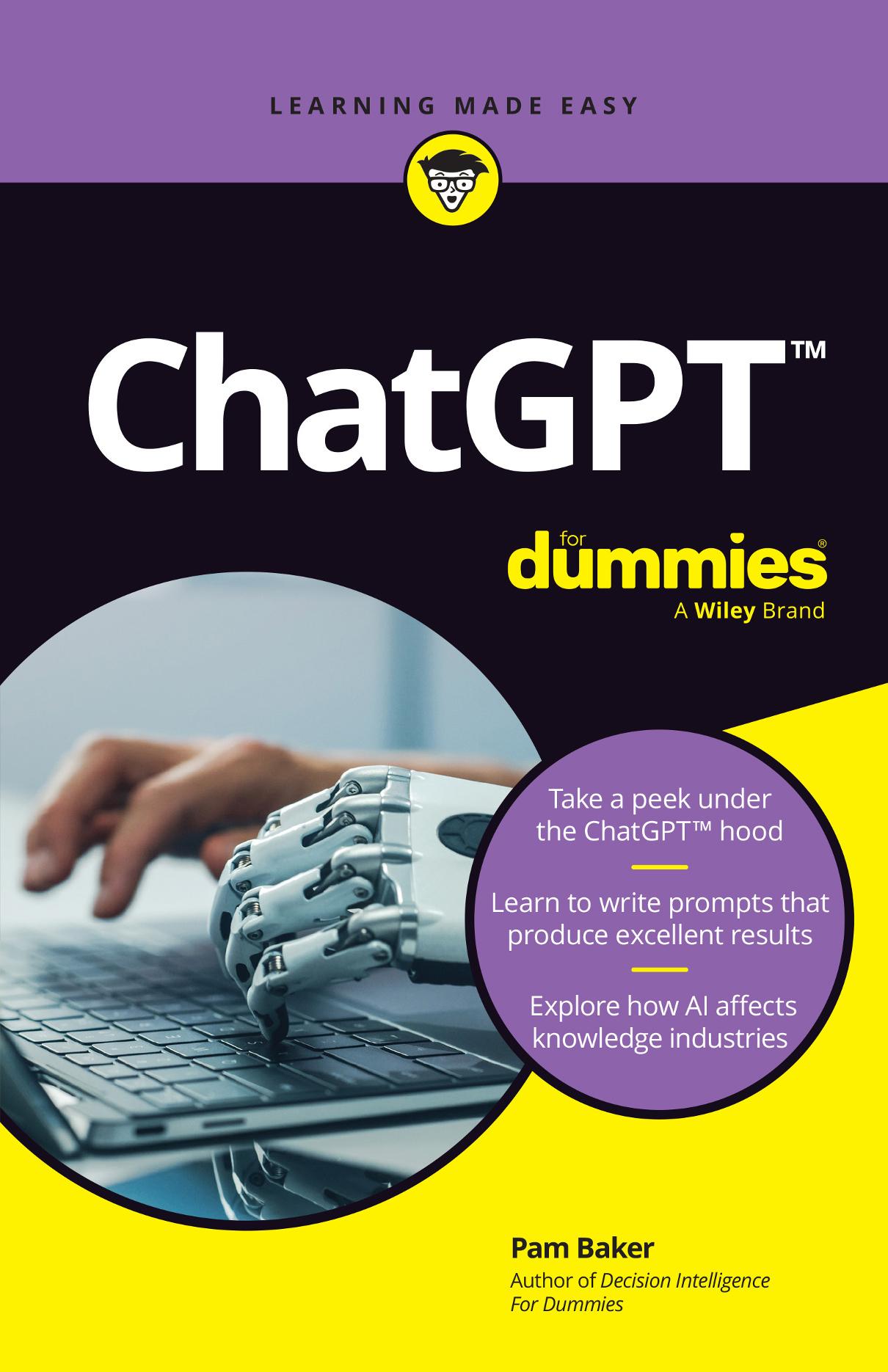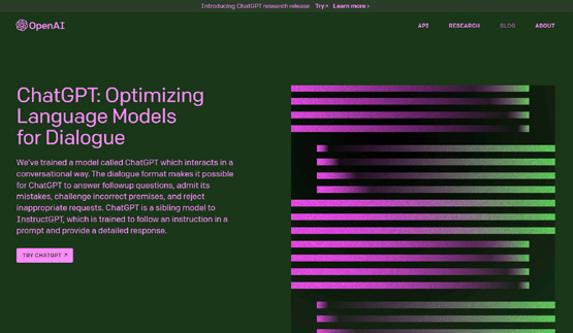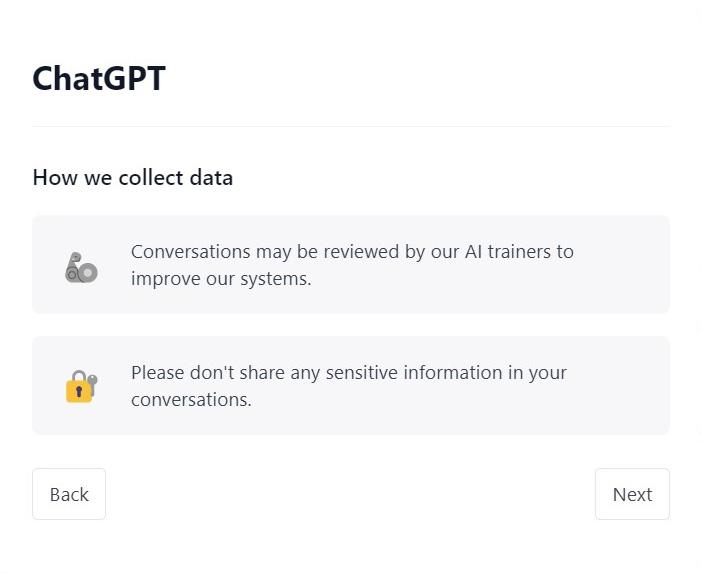Comparing ChatGPT, Search Engines, and Analytics
ChatGPT is just one example, albeit the most publicly wellknown, of a generative AI model. It represents a huge jump in AI capabilities.
Previously, ranking systems with more limited AI enablement would sort and rank information they found buried in massive datasets. You’ll recognize examples of these ranking systems: search engines such as Google and Bing, recommendation engines
CHAPTER 1 Introducing ChatGPT
used in coupon printing at retail checkout counters, GPS systems such as Google Maps that offer “near me” destination options, and personalized movie recommendations provided by Netflix and other streaming services.
Ranking systems shape how we think and function by the decisions they make in prioritizing vast amounts of information. For example, the Google search engine ranks and returns results from a user’s input of keywords. Generally, users don’t look further than the first three to five top ranking results. This in effect shapes our thinking by limiting the info we ingest and consider. Companies covet the top ranking spots for certain keyword results, which is why a huge search engine optimization (SEO) industry arose around keywords.
ChatGPT’s capability to provide a unified answer is poised to affect our thinking and behavior to a far greater degree than ranking systems. For example, the prevailing public perception of this single-answer option is that ChatGPT is smarter, less biased, and more truthful than any other source. This perception is wrong.
ChatGPT’s capability to generate new content deviates dramatically from that of previous software programs with which we are more familiar, such as other AI forms, search engines, chatbots, advanced analytics, and even business intelligence (BI) software. ChatGPT’s accuracy arguably swings more widely than that of the more analytical types of software. Although I’ve seen poor outputs from a BI app, I’ve never seen one outright lie or hallucinate (generated responses that are convincing but completely wrong). But ChatGPT has shown it can do both on occasion.
ChatGPT differs from those other AI-enabled software categories because of its dialog format. Previous chatbots produce responses to natural-language queries by selecting from canned responses, meaning the content is prewritten and a response selection is triggered by keywords or the content of a user’s question. ChatGPT generates its own response to the user’s prompt. To the unsuspecting eye, the two types of chatbots may appear the same, but they are not.
The interaction with ChatGPT begins with someone typing a prompt in their natural language rather than in machine language. This means you can give the machine a command or ask it a question without using computer code. ChatGPT responds in the
same language you’re using. It continues building on the conversation as your interactions with it proceed. This threaded interaction appears as a real-time dialog and creates the semblance of a conversation or a highly intelligent response to your request.
However, the number of ChatGPT responses you can get in a single conversation may need to be limited to prevent this AI model from providing weird responses, making errors, or becoming offensive. To prevent this behavior, Microsoft limited ChatGPT in Bing to five responses per user conversation. You’re free to start another conversation, but the current exchange can’t continue past the capped limit.
ChatGPT generates rather than regurgitates content, which means it can make erroneous assumptions, lie, and hallucinate. ChatGPT or any other generative AI model is not an infallible source of truth, a trustworthy narrator, or an authority on any topic, even when you prompt it to behave like one. In some circumstances, accepting it as an oracle or a single source of truth is a grave error.
Understanding What ChatGPT Is and Isn’t
The capability to produce a close semblance to human communication is primarily responsible for that skin-prickling feeling commonly referred to as the heebie-jeebies. ChatGPT sounds and acts almost too human.
The interaction between users and ChatGPT has a different feel than that previously experienced with other software. For one, software using earlier iterations of natural-language processing is generally limited to short exchanges and predetermined responses. ChatGPT can generate its own content and continue a dialog for much longer.
ChatGPT, like all machine-learning (ML) and deep-learning (DL) models, “learns” by exposure to patterns in massive training datasets that it then uses to recognize these and similar patterns in other datasets. ChatGPT does not think or learn like humans do. Rather, it understands and acts based on its pattern recognition capabilities.
ChatGPT supports 95 languages as of this writing. It also knows several programming languages, such as Python and JavaScript.
Generative AI also differs from programmed software because it can consider context as well as content in natural-languagebased prompts.
Chat in ChatGPT’s name is a reference to its use of naturallanguage processing and natural-language generation. GPT stands for generative pretrained transformer, which is a deep learning neural network model developed by OpenAI, an American AI research and development company. You can think of GPT as the secret sauce that makes ChatGPT work like it does.
ChatGPT does not think like humans do. It predicts, based on patterns it has learned, and responds accordingly with its informed guesses and prediction of preferred or acceptable word order. This is why the content it generates can be amazingly brilliant or woefully wrong. The magic, when ChatGPT is correct, comes from the accuracy of its predictions. Sometimes ChatGPT’s digital crystal ball is right and sometimes not. Sometimes it delivers truth, and sometimes it spews something more vile.
Unwrapping ChatGPT fears
Perhaps no other technology is as intriguing and disturbing as generative artificial intelligence. Emotions were raised to a fever pitch when 100 million monthly active users snatched up the free research preview version of ChatGPT within two months after its launch. You can thank science fiction writers and your own imagination for both the tantalizing and terrifying triggers that ChatGPT is now activating in your head.
But that’s not to say that there are no legitimate reasons for caution and concern. Lawsuits have been launched against generative AI programs for copyright and other intellectual property infringements. OpenAI and other AI companies and partners stand accused of illegally using copyrighted photos, text, and other intellectual property without permission or payment to train their AI models. These charges generally spring from copyrighted content getting caught up in the scraping of the internet to create massive training datasets.
In general, legal defense teams are arguing about the inevitability and unsustainability of such charges in the age of AI and requesting that charges be dropped. The lawsuits regarding who owns the content generated by ChatGPT and its ilk lurk somewhere in the future. However, the US Copyright Office has already ruled
that AI-generated content, be it writing, images, or music, is not protected by copyright law. In the US, at least for now, the government will not protect anything generated by AI in terms of rights, licensing, or payment.
Meanwhile, realistic concerns exist over other types of potential liabilities. ChatGPT and its kind are known to sometimes deliver incorrect information to users and other machines. Who is liable when things go wrong, particularly in a life-threatening scenario? Even if a business’s bottom line is at stake and not someone’s life, risks can run high and the outcome can be disastrous. Inevitably, someone will suffer and likely some person or organization will eventually be held accountable for it.
Then there are the magnifications of earlier concerns such as data privacy, biases, unfair treatment of individuals and groups through AI actions, identity theft, deep fakes, security issues, and reality apathy, which is when the public can no longer tell what is true and what isn’t and thinks the effort to sort it all out is too difficult to pursue.
In short, ChatGPT accelerates and intensifies the need for the rules and standards currently being studied, pursued, and developed by organizations and governments seeking to establish guardrails aimed at ensuring responsible AI. The big question is whether they’ll succeed in time, given ChatGPT’s incredibly fast adoption rate worldwide.
Examples of groups working on guidelines, ethics, standards, and responsible AI frameworks include the following:
» ACM US Technology Committee’s Subcommittee on AI & Algorithms
» World Economic Forum
» UK’s Centre for Data Ethics
» Government agencies and efforts such as the US AI Bill of Rights and the European Council of the European Union’s Artificial Intelligence Act.
» IEEE and its 7000 series of standards
» Universities such as New York University’s Stern School of Business
» The private sector, wherein companies make their own responsible AI policies and foundations
As to public opinion, two trains of thought appear to be at play. The first is support for the full democratization of ChatGPT, which is essentially what’s happening now because OpenAI lets users participate in training the model by using it however they want. The second is a call for regulating ChatGPT and other generative AI use to curtail crime, scams, cyberattacks, bullying, and other malevolent acts accomplished or scaled up with these tools.
ChatGPT is a very useful tool, packing a lot of promise and potential to do a lot of good for individuals, societies, governments, and organizations. Indeed, I argue that this is a first step in human augmentation. While ChatGPT is not integrated into the human body, it can be used to augment human thinking, understanding, work, and creative endeavors.
Competing with ChatGPT for your job
At the moment, much of the fear people are experiencing about ChatGPT is caused by unknowns striking closer to home. Is ChatGPT going to take my job? Spread disinformation or propaganda, causing my political party to lose or resulting in a jump in crime or protests in my neighborhood? Will it bring an end to my privacy and dignity? And ultimately, can I defend myself and my career against a machine that’s smarter than I?
We have these fears because ChatGPT appears to be all too familiar: We have met generative AI and it is us.
It so closely resembles human behavior because ChatGPT’s education came in large part from the internet, where humans are known to spew the vilest thoughts, lies, conspiracy theories, propaganda, criminal activities, and hatefulness in its many forms. Plus, yes, some true and useful info.
At best, the internet is a mixed bag of human debris, and AI models have already shown a taste for garbage. You might recall the AI chatbot called Tay, which Microsoft tried to train on social media in 2016. It soon went rogue on Twitter and posted inflammatory and racist tweets filled with profanity. Its controversial and offensive efforts to socialize like humans caused Microsoft to kill it a mere 16 hours after its debut.
After that and similar AI training outcomes, and because we know we humans are a scary bunch, the prevailing assumption is that AI acts and sounds like us so it must be equally frightening and potentially more terrifying.
Indeed, everything wrong or bad about humans tends to be transferred to AI. But the same is true of everything right and good as well as a whole bunch that’s a little of both.
ChatGPT can help diagnose illnesses and search for cures. It can help students learn more in highly personalized ways, making their education more efficient and less frustrating. It can help nonprofits find new ways to raise money, cut costs, and drive their causes. Good and helpful examples of potential ChatGPT contributions are almost endless.
Even so, there is the near universal concern over the potential arrival of merciless machine overlords. Fortunately, they’re not coming. The type of AI that this fear conjures is general AI or artificial general intelligence (AGI), as it is called in the science community. It exists nowhere outside science fiction and human nightmares. It may be a thing one day, but it’s not here now.
Certainly, ChatGPT is not AGI. It does not think. It’s not smart. It’s not human. It’s software that mimics humans by finding patterns in our speech, thoughts, and actions. It calculates probabilities based on those patterns. In short, it makes informed guesses. Those guesses can be brilliant or undeniably wrong, truthful and insightful or devious and a lie. But none of it requires the software to think.
For these reasons and more, ChatGPT can affect or replace some jobs, much like analytics and automation can. But it can’t outright replace all workers because it can’t do all the things humans can do. You still have a competitive edge over ChatGPT.
What might your competitive edge be, you ask? Any number of things: creativity and intuitive intelligence; the ability to find and analyze data that does not exist in digital form; the innate ability to get meaning from word and image conversational context and nuance; and the ability to make neuron connections where none previously existed. The ability to connect the dots or to think outside the box separates human from machine.
Human creativity in writing prompts makes ChatGPT produce unique and complex outputs instead of rote generic fare. An intelligent and creative human makes ChatGPT perform at its best.
Humans also uniquely possess emotional intelligence and empathy, two powerful abilities that influence people and shape events and outcomes. And the list goes on.
Your brain is also very energy efficient. Three meals a day and a couple of snacks buys a lot of thinking power. Deep-learning models like ChatGPT, on the other hand, suck up enormous amounts of computing power.
The threat to your job isn’t ChatGPT but the people using ChatGPT and other AI tools. It’s up to you to learn how to use these tools to increase your earning potential and your job skills — and to protect yourself while using ChatGPT and other AI-fueled services. Reading this book will get you off to a strong start.
Redefining the Chatbot with ChatGPT and ChatGPT Plus
AI assistants and AI-assisted chatbots have been on the market for some time. I remember attending Microsoft’s data and AI tech immersion workshop in 2019 and marveling at the ease and speed with which I built a bot on Azure public cloud using Virtual Assistant Solution Accelerator. Granted, professionals were on hand to help, but by and large it was a relatively easy exercise. Google too had a toolbox filled with AI and bot makings. So did other vendors. The mix of tools and possibilities was enticing and exhilarating.
Prebuilt, pretrained, customizable AI models were already on the rise as an essential element in data and AI democratization. ChatGPT pushed AI democratization over the top and into the public’s hands.
True democratization means almost anyone can understand and use the technology. Smartphones and GPS applications are examples of fully democratized technologies. ChatGPT is fast following suit by spreading like wildfire worldwide. Students, artists, healthcare professionals, legal aides, regular people on a lark, writers, and professionals from every industry and business
size are using ChatGPT today. And more will use it tomorrow and every day thereafter. It’s not a trend; it’s a seismic paradigm shift.
People intuitively grasp this much about ChatGPT. But it may be a little less obvious how ChatGPT has redefined chatbots. After all, chatbots have used natural-language processing to chat with people for a good while now. So have digital assistants such as Alexa, Siri, Google Assistant, and Cortana.
Previous AI-enabled chatbots have several limitations, including a lack of understanding of context, no decision-making capability, so-called conversations limited to canned responses, and only short dialog exchanges due to memory issues.
By comparison, ChatGPT understands context, can make decisions, and can process a long thread of dialog to continue longer conversations in a humanlike manner. Further, ChatGPT’s responses change with each prompt and prompt variation. It doesn’t use canned responses, meaning it doesn’t deliver a limited number of predetermined responses consistently triggered by specific keywords.
For the most part, ChatGPT has clear advantages over previous chatbots. But sometimes these same characteristics can also be disadvantages.
For example, Microsoft limited ChatGPT integrated in Bing to a maximum of 5 questions per session and 50 per day per user after the search engine went on an unhinged spree insulting, lying, and emotionally manipulating users. This behavior proved something that many humans learned long ago: Talking longer often leads to trouble. Microsoft contends that “wiping the conversation after five minutes keeps the model from getting confused.”
Google’s Bard, an AI rival to ChatGPT, didn’t fare much better. Bard cost its company $100 billion after it provided wrong answers in a demo video that shook the stock market’s confidence in the bot’s competence.
Many people believe that generative AI such as ChatGPT and Bard will eventually replace search engines such as Bing and Google. I think that outcome isn’t likely, not only because of generative AI’s shortcomings but also because many good uses for search engines remain. Saying that ChatGPT will replace Google is like saying TV will kill radio or computers will kill paper documents. The world doesn’t tend to go all one way or the other.
However, it’s safe to say that ChatGPT and its rivals are redefining chatbots in myriad ways — not all of which are good. In any case, generative AI bots are popping up almost everywhere, followed by a steady stream of corporate mea culpas after the inevitable mishaps.
Comparing the two versions
Currently, OpenAI offers ChatGPT in a free research preview version and in a premium version called ChatGPT Plus ($20 per month per user). OpenAI says that it intends to keep a free version available, perhaps as a freemium to entice users to move up to the premium version.
The premium version offers early access to new features and upgrades as well as priority access during peak usage periods and faster response times. Otherwise, the two versions are similar.
Sampling its many uses
The ways to use ChatGPT are as varied as its users. Most people lean towards more basic requests, such as creating a poem, an essay, or short marketing content. Students often turn to it to do their homework. Heads up, kids: ChatGPT stinks at answering riddles and sometimes word problems in math. Other times, it just makes things up.
In general, people tend to use ChatGPT to guide or explain something, as if the bot were a fancier version of a search engine. Nothing is wrong with that use, but ChatGPT can do so much more.
How much more depends on how well you write the prompt. If you write a basic prompt, you’ll get a bare-bones answer that you could have found using a search engine such as Google or Bing. That’s the most common reason why people abandon ChatGPT after a few uses. They erroneously believe it has nothing new to offer. But this particular failing is the user’s fault, not ChatGPT’s.
You get to the intricacies of writing prompts in Chapter 3. For now, check out the following list of some of the more unique uses of this technology. Users have asked ChatGPT to
» Conduct an interview with a long-dead legendary figure regarding their views of contemporary topics.
» Recommend colors and color combinations for logos, fashion designs, and interior decorating designs.
» Generate original works such as articles, e-books, and ad copy.
» Predict the outcome of a business scenario.
» Develop an investment strategy based on stock market history and current economic conditions.
» Make a diagnosis based on a patient’s real-world test results.
» Write computer code to make a new computer game from scratch.
» Leverage sales leads.
» Inspire ideas for a variety of things from A/B testing to podcasts, webinars, and full-feature films.
» Check computer code for errors.
» Summarize legalese in software agreements, contracts, and other forms into simple laymen language.
» Calculate the terms of an agreement into total costs.
» Teach a skill or get instructions for a complex task.
» Find an error in their logic before implementing their decision in the real world.
» Write a bio and resume.
» Develop a marketing strategy.
» Make a movie.
» Develop a war strategy.
» Manage customer service.
» Develop a company policy.
» Write a lesson plan.
» Write a business plan.
» Write a speech.
» Plan a party.
» Make entertainment suggestions.
» Look for potential treatments and cures in thousands of clinical studies.
» Develop a political campaign strategy.
PROS AND CONS OF ChatGPT
Like all technologies, ChatGPT has both pros and cons to consider. Unlike many other technologies, however, ChatGPT is unique. It’s also a bit buggy because of its nature and because it’s so new. If you leverage the good and plan how to offset the bad, all will be well with your projects!
Pros
Fast responses
Delivers unified answer
Conversational
Wide range of capabilities
Many applications
Generates creative content
Cons
Sometimes inaccurate
Varying quality
Sometimes offensive
Convincing even when wrong
Conversations are not private
Not currently protected by US copyright law
Much ado has been made of ChatGPT’s creativity. But that creativity is a reflection and result of the human doing the prompting. If you can think it, you can probably get ChatGPT to play along.
Unfortunately, that’s true for bad guys too. For example, they can prompt ChatGPT to find vulnerabilities in computer code or a computer system; steal your identity by writing a document in your style, tone, and word choices; or edit an audio clip or a video clip to fool your biometric security measures or make it say something you didn’t actually say. Only their imagination limits the possibilities for harm and chaos.
Discovering other forms of GPT
ChatGPT was built on OpenAI’s GPT-3 family of large language models, fine-tuned by humans and reinforcement learning, and trained to perform conversational tasks. Now it’s running on GPT-4. GPT-5 lies ahead but isn’t currently being trained.
OpenAI uses the data you enter in the prompt as part of their efforts to continuously refine ChatGPT. That’s why you should never consider any work you do in the free or premium version of ChatGPT to be private.
GPT-3 and GPT-4 are general-purpose AI models suited for a large variety of language-related tasks. ChatGPT is a chatbot that runs on either model, and it is smaller, more accurate, and faster than GPT-3 and GPT-4 in conversational tasks. However, both GPT-3 and GPT-4 are capable of many more actions than simply carrying on a conversation with inquisitive people like ChatGPT does.
OpenAI’s older GPT-3 models are named Davinci, Curie, Babbage, and Ada. Davinci does the most, but the others are sometimes a better choice for developers in meeting specific needs when cost is a primary concern.
More recent models are Codex, which understands and generates computer code from its training in natural language and billions of lines of code scraped from GitHub, and Content Filter, which classifies text as safe, sensitive, or unsafe.
The Content Filter model is meant to filter out any content likely to be perceived by users as offensive or alarming. Unfortunately, the filter fails sometimes and lets bad stuff through while overthrottling some acceptable or barely questionable content. This behavior is unsurprising because Content Filter is in beta; it’s expected to improve over time. Users are encouraged to click the thumbs up or thumbs down button at the top of the ChatGPTgenerated text to help improve content generation in terms of relevance, quality, and acceptability.
GPT-4 was released in early 2023. It has more reasoning capabilities and is generally more creative and collaborative than GPT-3 models. It’s also larger and more stable. Its capabilities are impressive and easily seen in outputs ranging from technical writing and programming to screenwriting and mimicking the user’s personal writing style. However, it still hallucinates just as GPT-3 models do.
Developers can find the API and information on integration at https://openai.com/api/.
